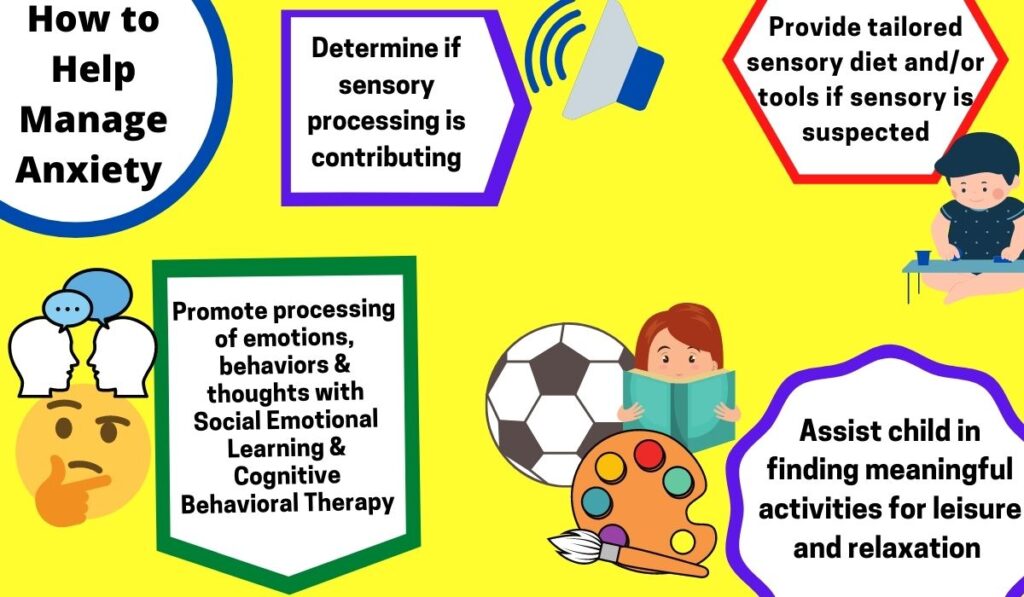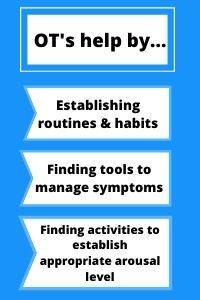
Last week I reviewed an article that investigated the relationship between preschoolers with sensory over-responsivity and school-age anxiety disorders. The authors found a significant correlation between the two factors. Now we know that sensory over-responsivity may contribute to clients who present with anxiety. The next question is, “What is my role in treating childhood anxiety as an occupational therapist?”
It intrigues me that despite OT’s mental health origins, I don’t want to overstep and treat a child with anxiety. Using the Zones of Regulation curriculum has equipped me to help a child who presents with generalized anxiety and self-regulation troubles.
When It’s More Than Anxiety
I personally feel that when I sense a bigger family dynamic, it’s time to refer to a family counselor. Also, I see that many professions are supporting trauma informed care. I believe [read: my opinion] to work with children with more complex psychological involvement, we have an obligation to pursue continuing education in that realm and/or know when it’s time to refer out.
OT’s Role in Treating Childhood Anxiety from AOTA’s Perspective
Let’s see what AOTA has to say. In its Anxiety Disorders fact sheet, AOTA mentions that anxiety impacts children’s participation because the fears they may have of failing, interacting with others, or more intense factors like panic attacks may cause children to limit the activities they are willing to participate in.
They next point to the cycle of how not being able to participate in these activities can lead to low self-esteem and impact their habits and routines. This is totally the stuff of OT! Also very interesting to me is children not knowing what activities to do to relax. This seems especially important in the age of technology when it’s way too easy to do everything online. We as OT’s know that occupations we do with our hands promote mental health!
Alright, now that we know where OT can help children in managing their anxiety, what action steps we can take?
Action Steps for OT’s to Address Anxiety


At home OT’s help the child and family in establishing routines, educating family members on how anxiety presents and how it impacts a child’s engagement in activities. An OT can also help a family to find activities they can enjoy together to promote balance and relaxation.
An OT at school may similarly provide information to staff on how anxiety may impact a child’s participation. OT’s also can present ideas for how to structure a child’s day and strategies to assist with regulation. An OT may also promote presenting activities in a modified way to reduce anxiety.
The AOTA fact sheet recommends that an OT can help on the community level by offering education and ideas of how to cope with anxiety symptoms to organizations that involve parents and work with youth.
What’s Your Next Move?
Knowing that AOTA recommends the above in treating children with anxiety, what will you do differently the next time you join a child and family on their journey with anxiety?
References
Occupational Therapy’s Role in Mental Health Promotion, Prevention, & Intervention With Children & Youth Anxiety Disorders. Retrieved July 20, 2020, from https://www.aota.org/~/media/Corporate/Files/Practice/Children/SchoolMHToolkit/Anxiety
